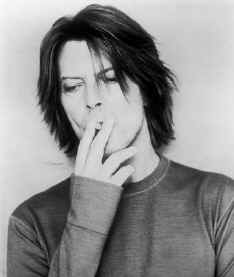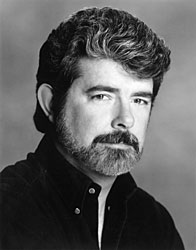





 |
| &nsbp |
 |
| &nsbp |
 |
| &nsbp |
 |
| &nsbp; |
 |
| &nsbp; |
 |
| &nsbp; |
Cast & Crew BiographiesJenniferConnelly | David Bowie | Jim Henson | George Lucas |
|
Biography Jennifer Connelly was chosen by director Jim Henson from hundreds of young actresses he interviewed and auditioned on both sides of the Atlantic. "I knew she was right for the role of Sarah as soon as she walked into my office in New York," said Henson. "I wanted a girl who looked and could act that role and that age. And Jennifer was perfect." Co-star David Bowie was just as enthusiastic: "Jennifer was absolutely right for the part of Sarah. She's extremely pretty, with looks rather like those of the teenage Elizabeth Taylor. She's also a damn good actress and was a joy to work with." Jennifer was born on December 12, 1970, in the Catskill Mountains in New York State. When she was a baby, the family lived in New York City where, with the exception of two years, she attended (and still does) the same school. At ten she began doing modeling work through the Ford Agency, in New York, followed by TV commercials. These led to movie auditions and she made her acting debut in "Once Upon A Time In America" in 1983, at the age of eleven. Next came an Italian film, "Phenomena" (1984), followed by "Seven Minutes Into Heaven" (also 1986). Then came LABYRINTH. "Jim Henson was wonderful to work with," she says. "He is a very gentle and considerate person as well as a wonderful director. And David Bowie was just great and it was wonderful watching him shoot, varying his performance from take to take." The ballroom sequence in the film was her "own personal favorite," she recalls. "I wore a beautiful silver ballgown, which was a refreshing change from the blue jeans I wore in almost every other scene. It was really a gorgeous set, with masses of huge chandeliers and thousands of flickering candles, hundreds of silken cushions and curtains, and masses of people in strange masks and ornate dresses. There was the thrill of dancing with David Bowie to one of the songs he composed especially for the film. There wasn't enough room, for technical reasons, to really dance around properly, but we just drifted slowly and gracefully (I hope!) to David's music, and he looked fabulous! It's all a sort of magical fantasy sequence inside a huge bubble." During the filming of LABYRINTH, Jennifer attended school lessons at the studio, as required by law. After twenty-one weeks of film work, she returned to New York City -- and school. "It's like the end of a chapter of my life," she sighed. |
 DAVID BOWIE Biography David Bowie stars in LABYRINTH as the powerful and compelling ruler of a magical world. He performs the five original songs he wrote for the film. From the very beginning, director Jim Henson envisioned Bowie as the lead of this major new fantasy film production. "Way back when we first started working on the story, we came up with this idea of a Goblin King," Henson explains. "And then we thought; 'Wouldn't it be wonderful to have music and someone who can sing?' David was our first choice from the very beginning. And he liked the idea. So the whole thing was really written with him in mind." Bowie stars as Jareth, the handsome and charismatic ruler who kidnaps Sarah's baby brother, challenges her to solve the labyrinth, and then tries to entice her into remaining with him in his magical kingdom. What attracted Bowie to the role? "Jim gave me the script, which I found very amusing," he says. "It's by Terry Jones, of Monty Python, and it has that kind of slightly inane insanity running through it. When I read the script and saw that Jim wanted to put music to it, it just felt as though it could be a really nice, funny thing to do." Bowie's songs for LABYRINTH range from a hauntingly beautiful love song, 'As The World Falls Down," to a lively dance number, "Magic Dance," which he performs on camera with his rowdy goblin subjects. He also sings the powerful and moving LABYRINTH theme song, "Underground," and is seen performing a song in one of the film's final and climactic scenes, "Within You." A fifth song "Chilly Down," sets the mood for a wildly exuberant dance number by some of the film's fantastic creatures, the Fireys. As one of pop music's biggest and most influential stars, Bowie has been responsible for setting trends and standards that have influenced musical stars and audiences around the world. Since his first major hit single, "Space Oddity," in 1969, and his album "The Man Who Sold The World," the following year, Bowie's many successful albums have included "Hunky Dory," "The Rise and Fall of Ziggy Stardust" and the "Spiders from Mars" (which also launched the hit single "Starman") "Aladdin Sane," "Station to Station," "Heroes," "Let's Dance" and "Tonight." Bowie made his motion picture debut in 1975 as the star of Nicholas Roeg's "The Man Who Fell To Earth" and his films since then have included "Just A Gigolo," "The Hunger," "Merry Christmas Mr. Lawrence," "Into The Night" (a brief guest role), and "Absolute Beginners." In 1980, he starred in the title role of "The Elephant Man" on the Broadway stage and, during 1983, undertook his successful "Serious Moonlight Tour," covering Europe, the United States, Japan, and Australia. |
 JIM HENSON Biography Jim Henson's creative worlds are never-ending -- and never quite the same. From the construction of his first green hand-puppet, to the incredible creatures of his fantasy films, he has expanded the Art of Puppetry and re-defined what is believable. Henson's fascination with the visual medium began as a child, when his family acquired its first TV set. His career had its start when he entered -- and won -- an audition for young puppeteers sponsored by a local TV station. During his freshman year at the University of Maryland, he was offered a five-minute late-evening spot at WRC-TV in Washington, D.C., which he filled with a show he called "Sam and Friends." The whimsical, humorous program won a local Emmy in 1959 for Outstanding Television Entertainment and led to appearances on a variety of network TV shows, including "The Ed Sullivan Show," "The Steve Allen Show," and "The Jimmy Dean Show." "Sam and Friends" allowed Henson to perfect his unique puppetry style, and to design characters whose expressive features took advantage of the visual intimacy of the TV screen. His creative fascination with the special effects film and television technology made possible was also reflected in his other productions. In 1964, he made "Timepiece," a 10-minute short film using live action and animation that won an Academy Award nomination. In 1968 and 1969, he created two non-puppet programs for NBC's "Experiment in Television." The first was "Youth '68," cited by Variety as one of the ten best TV shows of that year. The other program was "The Cube," which featured live performers and dealt with a contemporary dramatic theme. With the advent of "Sesame Street" in 1969, Henson's "Muppets" became a household word. Children's Television Workshop asked him to produce the puppet segments of the show -- a partnership that continues to this day. In 1976, one of England's major entertainment figures, Lord Lew Grade, offered Henson the opportunity to produce "The Muppet Show" at his London studios. Within three years, the program reached an estimated audience of 235 million viewers in more than 100 countries. During its five years in production, "The Muppet Show" won three Emmy Awards, a Peabody, a Writers Guild of America Award, and numerous other international honors. Building on the show's popularity, Henson produced his first full-length feature film, the successful 1979 release "The Muppet Movie." It was followed by "The Great Muppet Caper" in 1981 and "The Muppets Take Manhattan" in 1984. In 1982, Henson released a totally new style of feature fantasy film, "The Dark Crystal." It was the first all-creature, live-action fantasy film ever made and became one of Universal Pictures' most successful releases of the year. Henson's new 1986 fantasy film, LABYRINTH, marks a new level of achievement in the creation of an entirely new cast of incredible creatures. Henson maintains his involvement in television with the HBO program, "Fraggle Rock", now ending its fourth season. The program is seen in more than 80 countries in 10 different languages. His CBS-TV Saturday morning animated show, "Muppet Babies," has just ended its second season as one of the highest-rated programs in its timeslot. |
 GEORGE LUCAS Biography George Lucas was born in May, 1945, in Modesto, California, where he attended Modesto Junior College before enrolling at the University of Southern California film school. At USC he made several short films, including the science-fiction short "THX 1138," which took first prize in the 1967-68 National Student Film Festival. Later that year, he won a scholarship to observe the filming of "Finian's Rainbow," directed by Francis Coppola, and went on to work as Coppola's assistant on "The Rain People." In 1969, Lucas moved to Marin County, and, with Coppola, helped to establish American Zoetrope, an independent film production company. Zoetrope's first project was Lucas's first feature, "THX 1138," an expanded version of his prize-winning student film. Lucas subsequently emerged as a leading director with "American Graffiti" (1973), which he also co-scripted. A nostalgic recreation of American adolescence in the early 1960s, it became a big success with public and critics alike and won the Golden Globe, the New York Film Critics Award, and the National Society of Film Critics Award. In 1976 he wrote and directed the phenomenally successful "Star Wars," which became the biggest money-making film of all time and won seven Academy Awards. Lucas later created the stories for and also served as executive producer of the "Star Wars" sequels: "The Empire Strikes Back" and "Return of the Jedi." In 1978 he joined with Francis Coppola to executive produce "Kagemusha," a film by Japanese director Akira Kurosawa. Lucas was also the executive producer of the highly successful "Raiders of the Lost Ark," and "Indiana Jones and the Temple of Doom," both directed by Steven Spiel berg. On both "Indiana Jones" features, he created the story as well. In 1985, Lucas again joined forces with Francis Coppola to executive produce "Mishima," a film directed by Paul Schrader, based on the life and novels of Yukio Mishima. Most recently, Lucas has brought some of his most popular "Star Wars" characters to television with the animated series "Ewoks and Droids: The Adventures of R2-D2 and C-3PO," and the made-for-TV movies "The Ewok Adventure," and "Ewoks: The Battle for Endor," one year later. This summer, Lucas will also executive produce "Howard the Duck," a live-action comedy from Universal Pictures. "Howard" represents Lucas' third collaboration with writer/director Willard Huyck and writer/producer Gloria Katz, who previously co-scripted "American Graffiti" and "Indiana Jones and the Temple of Doom." |